How to prepare cast iron cookware: calcination and impregnation
The beautiful black cast iron frying pan you just bought is not suitable for cooking. It needs to be washed thoroughly and then calcined. How to treat dishes correctly so that they do not rust and nothing burns on them? All you need is a stove, vegetable oil and a silicone brush.
Why you can’t fry in a cast iron frying pan right away
The fact is that the dishes arrive from the store in technical lubricant, which protects the cast iron from corrosion. These oils are not edible. In addition, dirt and scale sometimes remain on the dishes - production waste.
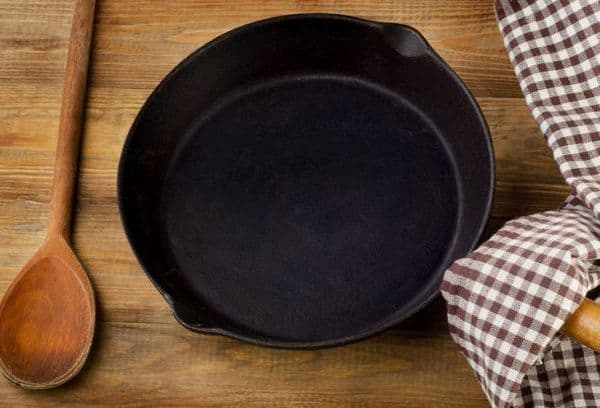
Cleaning
First of all, the dishes need to be rid of dirt and other debris. To do this, wash the pan under running hot water with regular dish soap or laundry soap.
To enhance the effect, you can take a paste of baking soda. Harsher abrasives, including iron brushes, are not recommended: dirt will clog into microcracks, and it will be difficult to remove them from there.
Next you need to get rid of the technical grease. They do this in one of two ways:
- Place the frying pan over medium heat and heat until the material turns gray.
- Place on the stove, add almost 1 kg of salt and heat for 10-25 minutes until the cast iron turns gray and the salt turns brown. The spice should be stirred periodically with a spatula or spoon, preferably a wooden one.
Advice
As some vloggers and housewives point out, salt is corrosive.
The magazine purity-en.htgetrid.com recommends turning on the hood or opening a window during calcination: as the technical oil evaporates, it will smoke and smell unpleasant.
Impregnation
After cleaning, you need to close the pores of the cast iron so that it becomes glossy - then food will not burn on it. In addition, it is excellent protection against rust. The procedure is carried out in two ways.
Hot oil:
- Generously pour vegetable oil (preferably odorless) into the frying pan and spread it over the entire work surface with a brush, hand or rolling.
- Warm over medium heat for 25 minutes. Some of the oil should be absorbed.
- Let cool. Pour out the remainder and wipe dry with a paper towel.
Oil impregnation:
- Heat the frying pan over medium heat to about 100-150 degrees.
- Turn off the heat and add oil.
- Distribute with a brush, rubbing the seed squeeze into the walls and bottom.
- When there is almost no oil left, let the pan cool completely.
- Remove any remaining oil with a paper towel, partially rubbing it into the dish.
- Warm up briefly so that the oil is “baked” and excess moisture is removed.
How to properly use a cast iron frying pan
To prevent cast iron from losing its properties and deteriorating in the future, it needs proper care. Simple rules on how to use a cast iron frying pan:
- It is not recommended to wash it with a product - only with a sponge and hot water.
- If you don’t want to put up with constantly seemingly unwashed dishes, use only regular washing gel.
- Never leave the pan to dry - it will develop rust.
- After washing, immediately wipe the dishes dry with paper towels and lightly grease with vegetable oil.
- Store in a dry place and preferably on lower shelves: cast iron pans are heavy.
- Never soak for too long.If pieces stick, place the frying pan on a dry table, pour a little water on the bottom, let stand for no longer than 2 hours and wash.
- Theoretically, it is acceptable to stir in a cast iron pan with an iron spoon/spatula and scrub it with a wire brush/scourer. No special layer will be damaged, and calcination with oil is easy to repeat. However, microscratches will not go away, and in this place the bottom/walls will become less and less easy to clean, although cast iron is one of the hardest materials, and the effect will not be noticeable very soon.
Important
Keep in mind that a cast iron frying pan takes a long time to heat up, but very strongly, and it also takes a long time to release heat. Do not overheat the cookware, reduce the heat as soon as the frying oil begins to crackle slightly under a drop of water, and turn it off two to five minutes before the end of cooking. Otherwise, the food will burn.
Strictly not recommended:
- heat the pan until red hot;
- drop, especially from a height;
- beat (for example, crush nuts in a bowl);
- clean with caustic liquids that can penetrate deeply into the porous texture of cast iron;
- leave dishes wet or soaked or on a wet surface;
- sprinkle with salt to absorb burnt marks, grease and odors - salt often provokes rust.
Advantages of cast iron cookware
Very heavy and quite expensive - is it worth buying a cast iron frying pan? Most chefs and experienced housewives answer: “Absolutely.”
The undeniable advantages of cast iron:
- it retains heat for a long time, releasing it gradually - the dish is cooked evenly, creating the effect of cooking in an oven; no modern analogue gives the same effect;
- for the same reason, a cast iron frying pan is ideal for grilled meats;
- incredibly durable: cast iron is only afraid of rust, but protection against it is elementary;
- since it is not coated with Teflon or ceramics, it is absolutely not capricious, it is not afraid of overheating, a metal spatula or spoon, it can even be cleaned with a metal scraper (as a last resort);
- Having wiped off the dirt in the harshest way, just warm up the pan again and grease it with oil - the non-stick and anti-corrosion coating is restored;
- tolerant to all heating methods: calmly frying, stewing and baking in the oven, on a fire or gas stove, regular or induction panel;
- Cast iron is fragile, but very hard material, and you can safely fry nuts, bone-in meat, and other hard foods on it.
A cast iron frying pan allows you to cook incredibly tasty, delicate dishes. Its main drawback is its fragility (it doesn’t tolerate sharp blows well) and its impressive weight (it’s better to straighten pancakes on this one with a special turntable or the bottom of a ladle, and store the dishes on the middle or lower shelves). To ensure that the frying pan lasts longer, does not rust or burn food, it is enough to treat it with oil and reduce the heat in time.
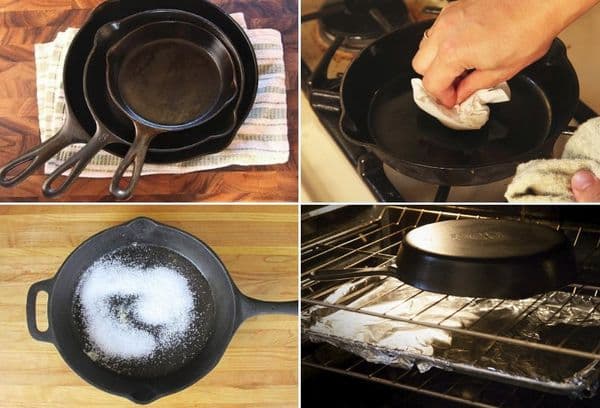
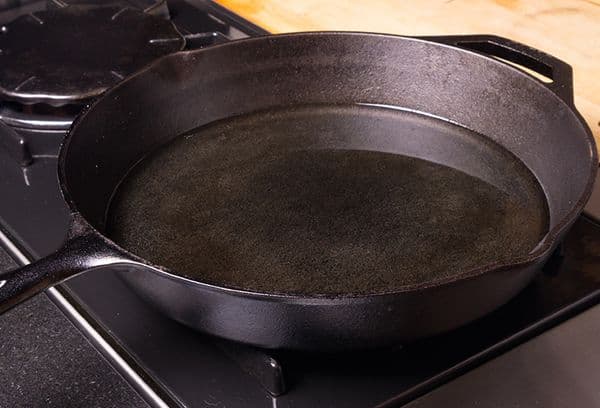
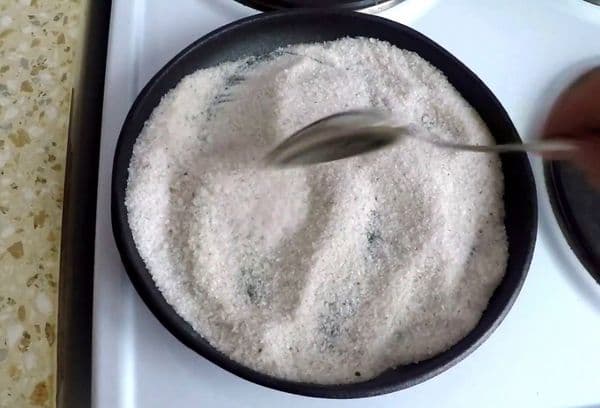
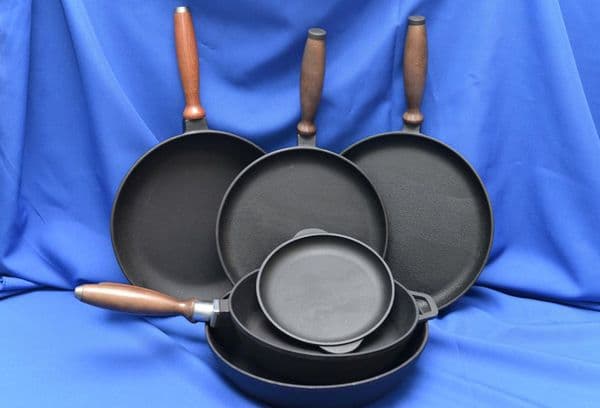
Great instructions. Everything is clear and understandable. Treated my new cast iron skillet.